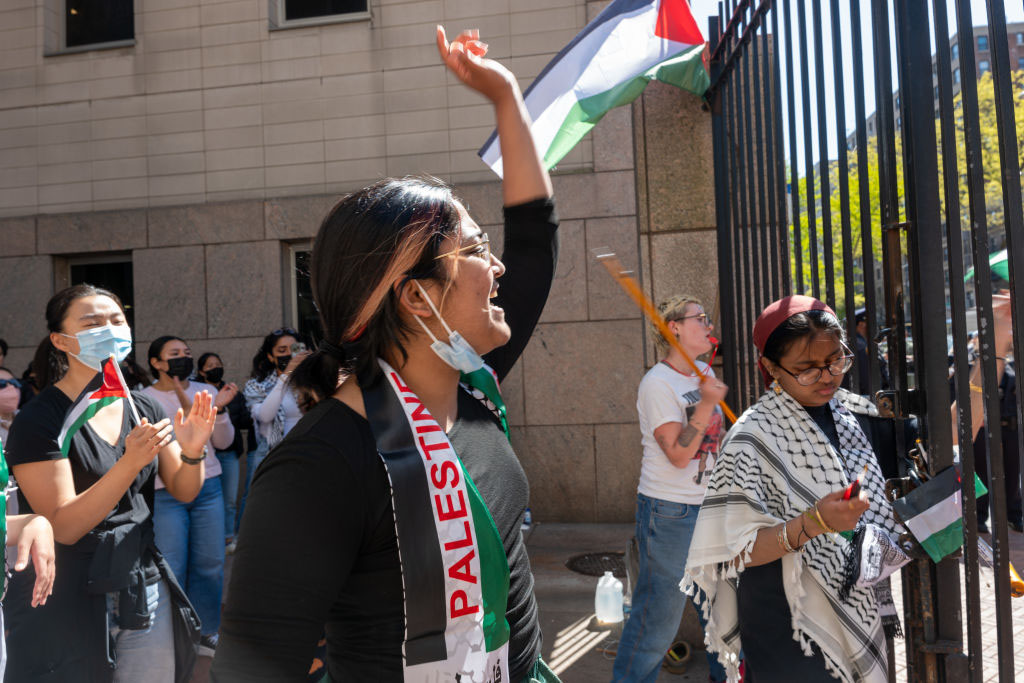Along the Israeli highway that snakes up through the Golan Heights toward Syria sits the Kiryat Shmona central bus station, a herding ground and grazing spot for Israel Defense Forces (IDF) soldiers on their way to the Syrian and Lebanese borders. On Oct. 27, one such soldier — dressed in army pants and an undershirt and fresh off the IDF’s medical operation at the fence with Syria — put in his order at the Best Burger kiosk. He struck up a conversation with a journalist passing through, and, on condition of anonymity, spoke about darting along the border with teams of IDF medics, providing emergency care to wounded Syrians.
When the IDF detects one or more war casualties approaching the new high-tech fence Israel built this year to keep out the flying parts of Syria’s civil war, “We open little passageways so they can come through,” the soldier said.
“We’re not allowed to cross the fence into Syria,” he said. “It’s a very gray area. And we can’t do it at night, because it’s too dangerous.”
Once the wounded are inside Israel, a temporary medical station is set up at the site of entry, and a handful of IDF doctors rush out to operate. From there, depending on the severity of the patients’ wounds, they are either released back to Syria, transferred to the IDF field hospital or transported via IDF ambulance to one of three medical centers in Israel providing more long-term care.
Working so intimately with a longtime foe of Israel has been strange, the soldier said. “It’s hard, because they were raised to hate us. And it doesn’t help that we don’t speak the same language,” he said. “But they sometimes learn to like us — that’s the good thing that comes out of it.”
When asked about the kind of injuries he’s seen in the field, the soldier shifted his eyes downward toward the Best Burger condiment bar and tightened his jaw. “It’s not pretty,” he said.
The most common injuries coming from the Syrian battlefield and into Israeli hands are bullet wounds (often multiple), blast wounds and crush wounds. Some patients, including small children, have been shot through the head by snipers; some are covered in hundreds of raw gashes from clouds of shrapnel; some arrive with parts of their limbs or torsos gouged out from close-proximity bombings, almost like giant shark bites. They’re some of the worst cases that IDF medics and Israeli doctors have ever seen, but not an altogether new class of injury: “Unfortunately, in Israel, we have some experience with military trauma, due to chronic ongoing Mideast conflict, local wars and terror attacks,” said Dr. Alexander Lerner at Ziv Medical Center, author of “Armed Conflict Injuries to the Extremities.”
At the northernmost point of the Golan Heights, in what used to be Syria but is now Israel, the small Druze village of Majdal Shams spills down the base of Mount Hermon. The view from here is of a shrubby yellow valley, dotted with Syrian border towns situated just a few kilometers to the east. After dusk falls, residents can hear pops of gunfire and the rumbling of exploding bombs in the nearby towns. And a few minutes outside Majdal Shams, at a lookout atop the rocky remains of a Syrian rampart from a past war with Israel, some of them gather to anxiously watch the civil war play out among their neighbors — including many Druze relatives, from which the Israeli-Druze were separated when Israel and Syria cut up the Golan Heights.
Near the lookout, a Syrian national flag flies above the town of Quneitra, an indication that it is held by the regime of Syrian President Bashar Assad. But in recent days, journalists inside Syria have reported that the rebels are closing in on Quneitra — making for a new round of bloody war casualties right next to Israel.
Counter-intuitively, however, injured Syrians cannot sneak into Israel through the official Quneitra border crossing, which Israeli-Druze students use to pass to and from their Damascus universities under the supervision of the International Red Cross.
Despite the intense standoff a few kilometers away, the crossing was quiet on Sunday — so quiet that one could hear the wind whip through the large Israeli flag flying over the gate. A soft-spoken young IDF guard who was sitting and playing his guitar at the crossing — and who wished to remain anonymous — said that Syrians cannot seek medical help through this easy entry point because its Syrian gate is controlled by Assad, who has an interest in keeping the rebels from patching their wounds. (The rebels seized the Syrian side of the Quneitra border crossing for a few hours on one day in June, but Assad’s forces quickly beat them back.)
Instead, wounded Syrians must reach one of the secretly designated pickup points along the fence — silent knowledge among the IDF, the rebels and international aid groups in the area — in order to receive life-saving treatment in Israel, before crossing back over the rocky Golan Heights terrain and into the war zone.






















 More news and opinions than at a Shabbat dinner, right in your inbox.
More news and opinions than at a Shabbat dinner, right in your inbox.